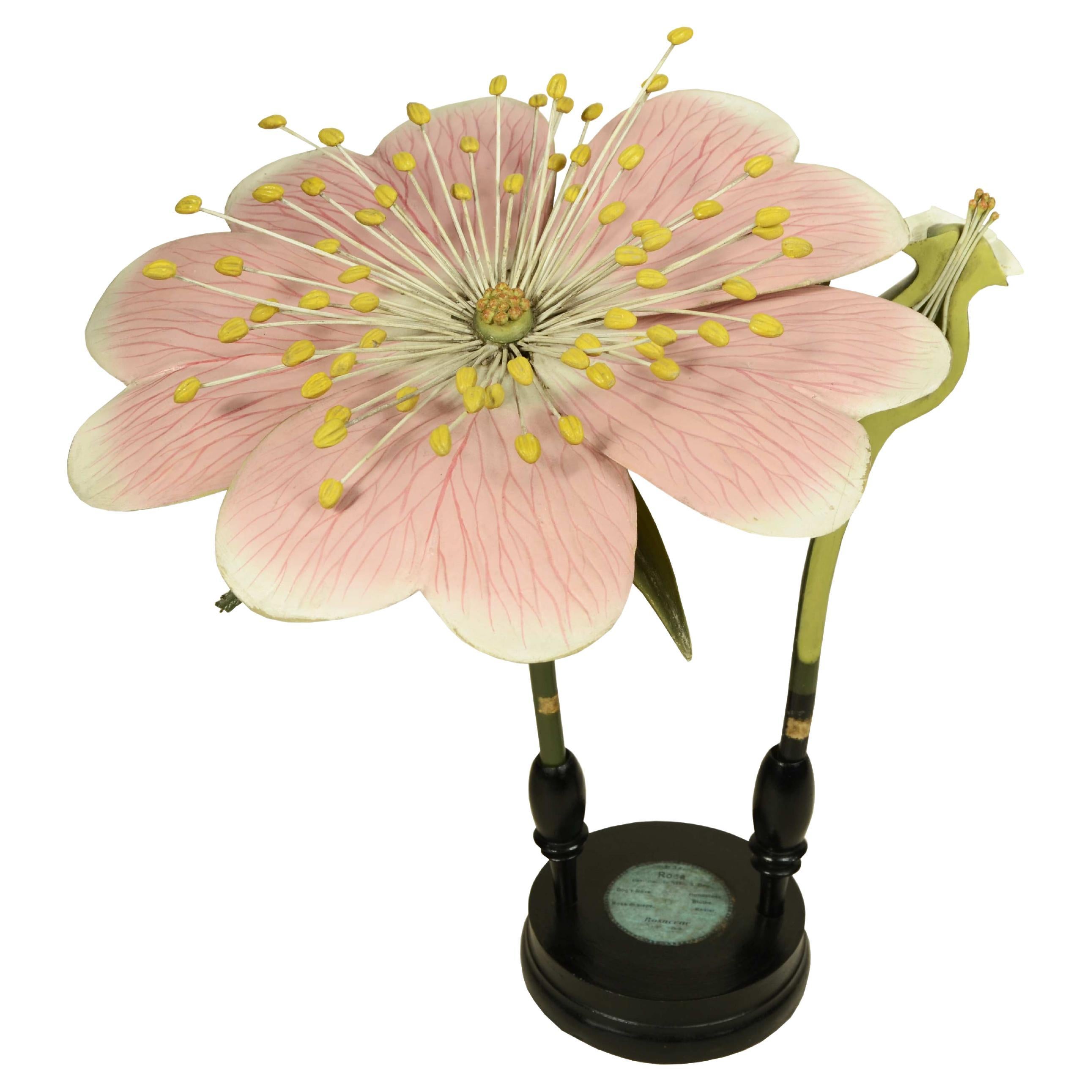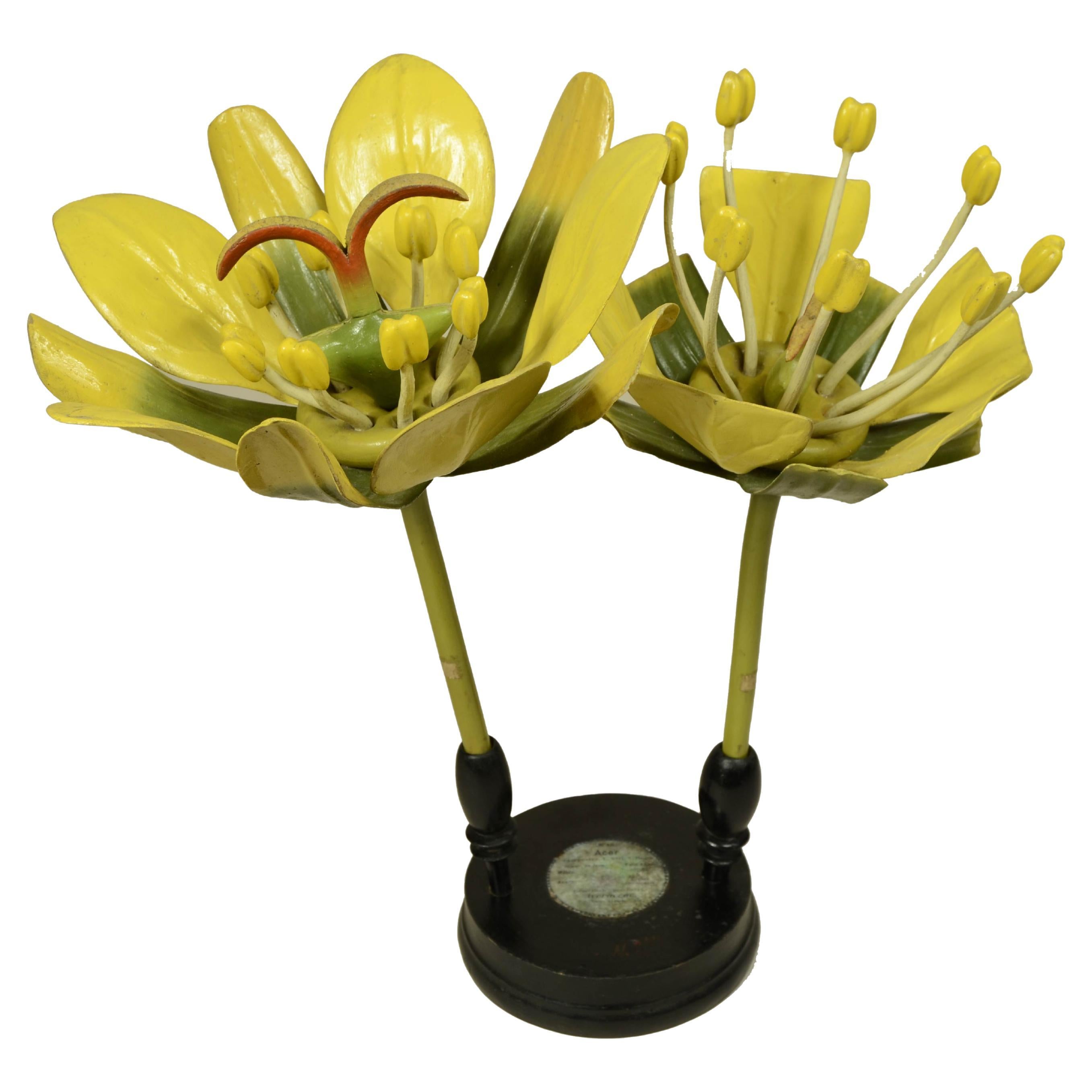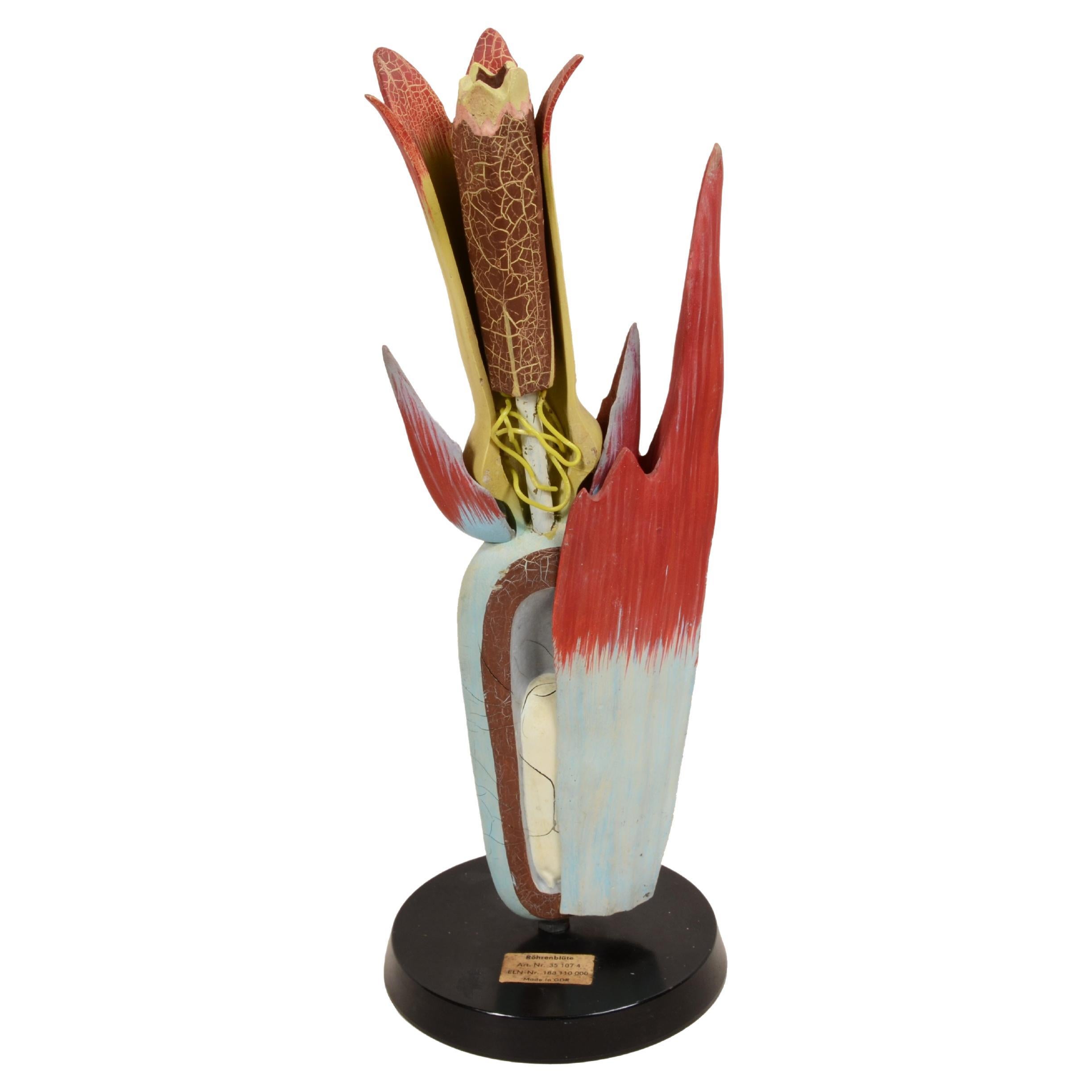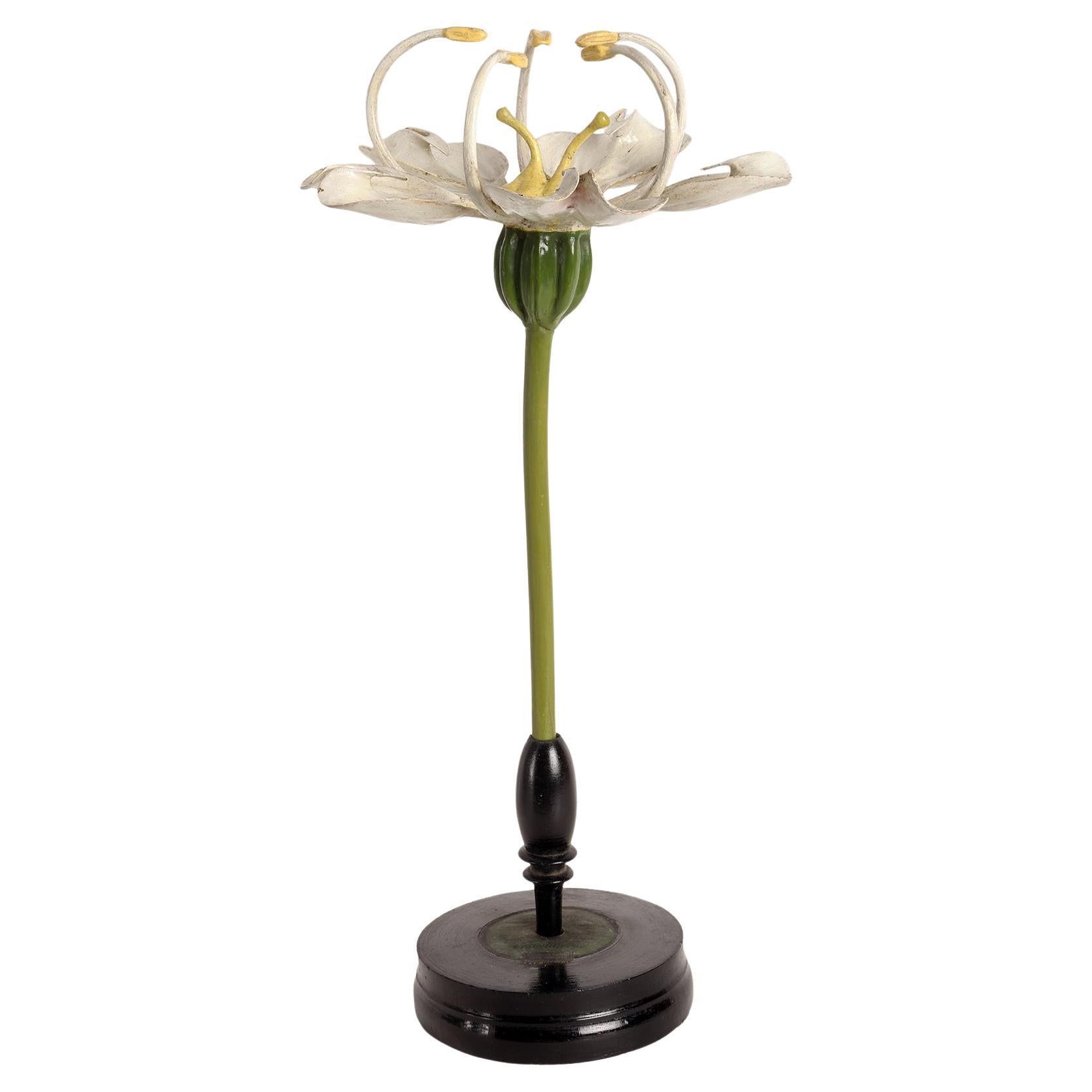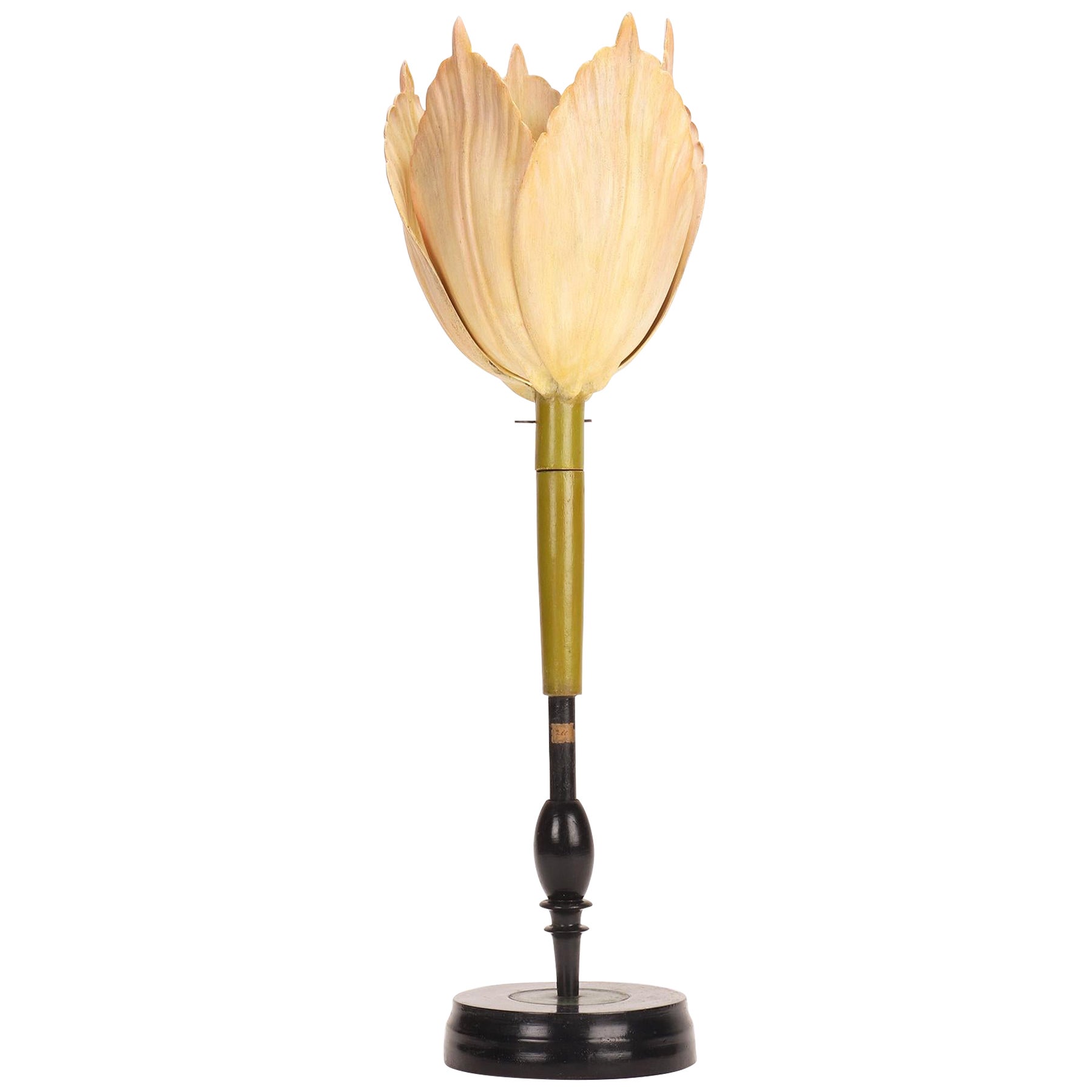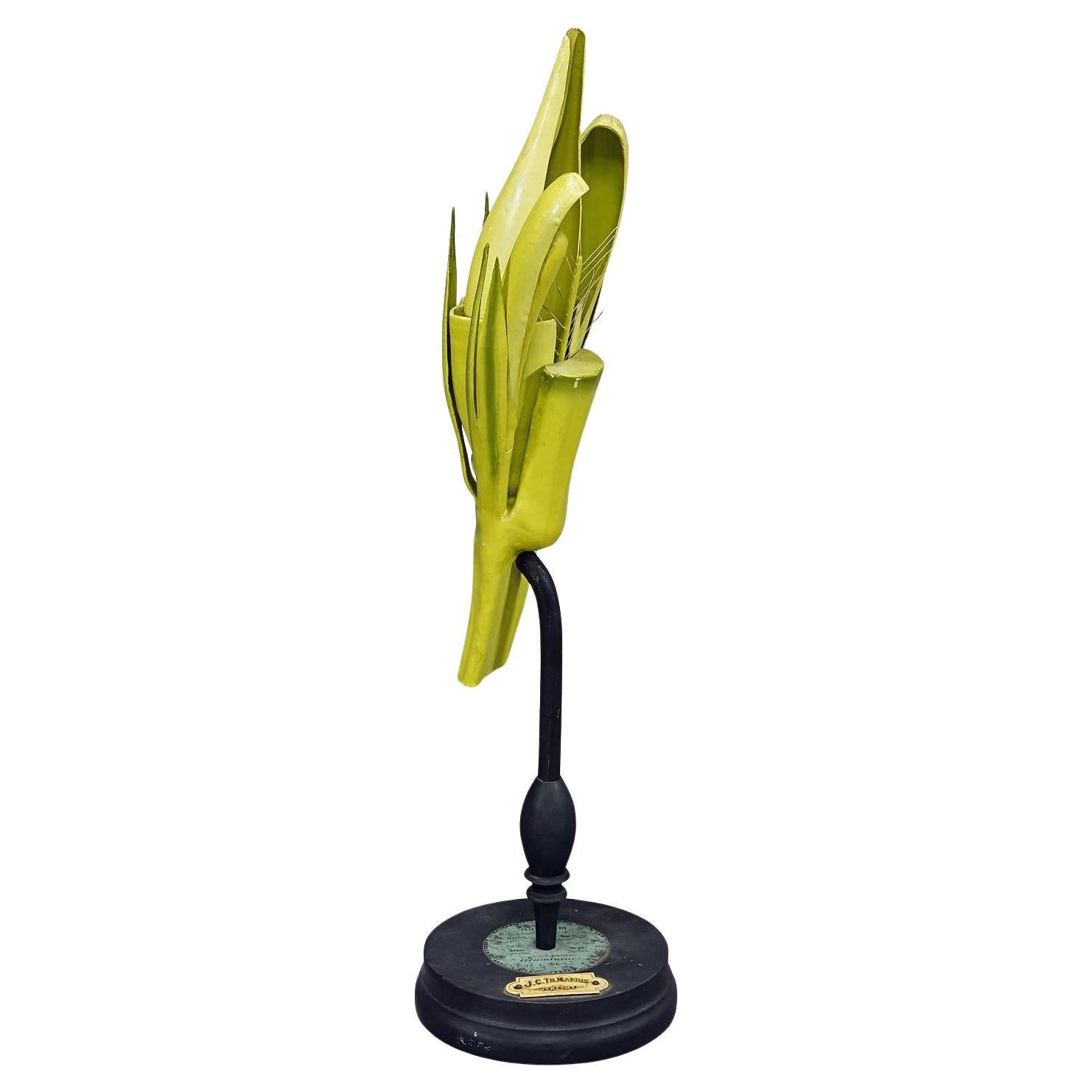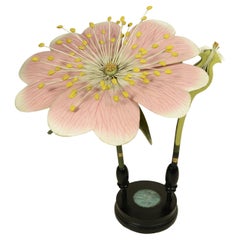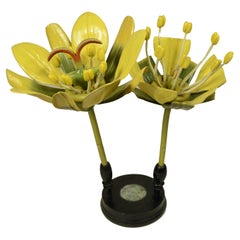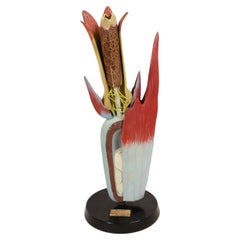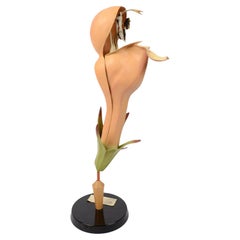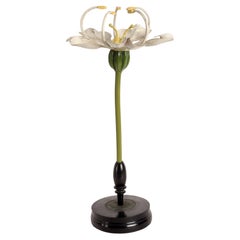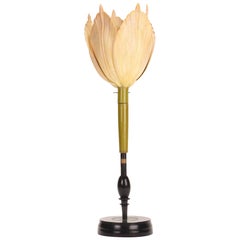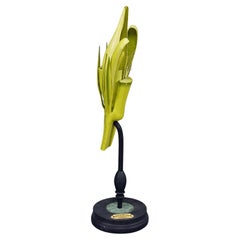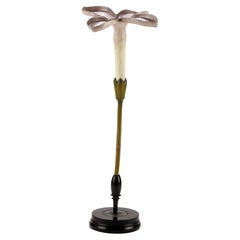Items Similar to Original botanical model of the Tulip flower Robert Brendel late 19th century
Want more images or videos?
Request additional images or videos from the seller
1 of 18
Original botanical model of the Tulip flower Robert Brendel late 19th century
$5,159.71
£3,805.09
€4,300
CA$7,125.52
A$7,818.39
CHF 4,091.78
MX$96,217.92
NOK 51,550.32
SEK 48,284.56
DKK 32,749.78
About the Item
Original Brendel botanical model of the Tulip flower made in Germany around the end of the 19th century by Robert Brendel (1821-1898). The flower is made of wood and papier mache and breaks down into 3 sections and is mounted on a round base in ebonized wood with a label in the center describing its characteristics.
Measurements Height cm 51 - 20 inches, flower dimeter 17 - 6.8 inches.
Tulipa, commonly known by the name Tulip, its name is derived from the Turkish word for turban, this genus of bulbous plants originated from the Pamir Mountains, then extended growth from the Iberian Peninsula, to North Africa, to Northern Europe reaching as far as China.
It is a very popular flower in Turkey, in the 16th century during the reign of Suleiman the Magnificent it was selected in numerous varieties and planted everywhere.
Its cultivation began in the Netherlands around the end of the 16th century, quickly becoming a luxury commodity, not only because of its decorative value but also because of its cost, which grew rapidly. From the trade between 1634-37 came the first speculative bubble in the history of capitalism named the tulip bubble.
The Robert Brendel & Sons manufactory was founded in Breslau by Robert Brendel in 1866 with the production of botanical models of flowers, fruits and plants designed for teaching botany, creating a perfect fusion of science and art.
The need to create paper mache plant models had arisen from the difficulty of finding fresh material.
The activity began with the production of models of medicinal plants, then at the suggestion of the director of the Institute of Plant Physiology at the University of Wroclaw, the first such institute in the world, Robert Brendel extended production to include models of botany and plant anatomy more generally.
The production technique started from the development of casts on which with the prevalent use of papier-mâché, the model maker shaped the models.
The specimens produced were tempera-colored and polished with wax lacquer, each prototype was assembled to be supported by a rattan stand and then inserted into a round wooden base, which in the oldest models was painted black, while the bases inherent in the production since the early 1900s was of light wood. A label was pasted on the base with the name in Latin and the vernacular name and in various languages, as well as the serial number, scale and other details.
This teaching potential was adopted by many educational institutions, resulting in significant improvements in both the teaching and study of botany, compared with earlier methods that were based on drawings or prints, or with the practice of dissecting real plants, with the resulting difficulty regarding rapid decomposition.
Being able to have three-dimensional enlarged models, faithful reproductions of real ones helped greatly in the study of plant anatomy, over time Brendel began to develop paper mache models that could be disassembled, the use of hooks and small hinges allowed for dissection and disassembly of the pieces significantly increasing the importance of teaching.
By the end of the 19th century, the Brendel Manufacture was famous and recognized worldwide, models were displayed and awarded in various world exhibitions, both in Europe and overseas, the catalog included more than 300 different models.
It is likely that the final closure of the business originated with the passing of the racial laws during the Third Reich, as the Brendel family was of Jewish descent.
- Dimensions:Height: 20 in (50.8 cm)Diameter: 6.8 in (17.28 cm)
- Materials and Techniques:
- Period:
- Date of Manufacture:1890
- Condition:Wear consistent with age and use.
- Seller Location:Milan, IT
- Reference Number:1stDibs: LU1020245549902
About the Seller
5.0
Vetted Professional Seller
Every seller passes strict standards for authenticity and reliability
Established in 1999
1stDibs seller since 2014
398 sales on 1stDibs
Typical response time: 2 hours
- ShippingRetrieving quote...Shipping from: Milan, Italy
- Return Policy
Authenticity Guarantee
In the unlikely event there’s an issue with an item’s authenticity, contact us within 1 year for a full refund. DetailsMoney-Back Guarantee
If your item is not as described, is damaged in transit, or does not arrive, contact us within 7 days for a full refund. Details24-Hour Cancellation
You have a 24-hour grace period in which to reconsider your purchase, with no questions asked.Vetted Professional Sellers
Our world-class sellers must adhere to strict standards for service and quality, maintaining the integrity of our listings.Price-Match Guarantee
If you find that a seller listed the same item for a lower price elsewhere, we’ll match it.Trusted Global Delivery
Our best-in-class carrier network provides specialized shipping options worldwide, including custom delivery.More From This Seller
View AllDouble botanical model of the Rosa Canina flower Robert Brendel late 19th century.
Located in Milan, IT
Double botanical model of the Rosa Canina flower made around the end of the 19th century by Robert Brendel (1821-1898). The flower is made of wood and papier mache and each one break...
Category
Antique Late 19th Century Natural Specimens
Materials
Wood
Double botanical model of the flower of the Field Maple Robert Brendel late 19th century
Located in Milan, IT
Double botanical model of the flower of the Field Maple made in Germany around the end of the 19th century by Robert Brendel (1821-1898). The flower is made of wood and papier mache ...
Category
Antique Late 19th Century Natural Specimens
Materials
Wood
Educational botanical cross-sectional model of the inner part of sunflower flower
Located in Milan, IT
Educational botanical model in section of the sunflower flower showing its inner part, this is an enlarged and decomposable inner tubular corolla of a concrescent petal section in th...
Category
Vintage 1950s Taxidermy
Materials
Bakelite
1930s Germany Botanical Model of the Lamium Purpureum Flower
Located in Milan, IT
Educational model of the Lamium purpureum L. (false purple nettle) flower made of painted papier mâché with a Bakelite base from the 1930s, German ma...
Category
Vintage 1930s German Scientific Instruments
Materials
Parchment Paper
Leiden bottle second half of the 19th century accumulates preserves electrical charges
Located in Milan, IT
Leiden bottle from the second half of the 19th century is about an electrical component that accumulates and stores a high-voltage electrical charge by means of an external source ...
Category
Antique 1880s Scientific Instruments
Materials
Glass
Handcrafted mechanical lunarium with cast iron base, second half of the 19th cent
Located in Milan, IT
Handcrafted mechanical lunarium with cast iron base, second half of the 19th century, surmounted by a globe made by cartographer Jan Felkl. Turning the crank placed under the circle...
Category
Antique 1870s Globes
Materials
Metal
You May Also Like
A botanic model Brendel, Germany 1900.
Located in Milan, IT
A rare botanical model of the Brendel, Conium maculatum N.60 (Umbelliferae). The round base in ebonized wood holds the botanical model which reveals the flower of the Hemlock. Brende...
Category
Early 20th Century German Scientific Instruments
Materials
Wood
A botanic model of a pale pink tulip, Brendel, Germany 1880.
Located in Milan, IT
A rare Brendel botanical model of Tulipa gesneriana, the Tulip N.200 (Liliaceae), light pink color. The wooden ebonized round base holds the model which opens revealing the flower. T...
Category
Antique Late 19th Century German Scientific Instruments
Materials
Wood
19th Century Botanic Model by Robert Brendel - Barley
By Robert Brendel
Located in Berghuelen, DE
19th Century Botanic Model by Robert Brendel - Barley
A rare antique botanical model manufactured by the famous Robert Brendel manufactory for botanicals models around 1900. Highly ...
Category
Early 20th Century German Mid-Century Modern Natural Specimens
Materials
Plaster, Wood, Paper
Botanic Model Brendel, Germany, 1890
Located in Milan, IT
A rare botanical model of the Brendel, Syringa vulgaris N. 37 (Uleaceae). The round base in ebonized wood holds the botanical model which reveals the flo...
Category
Antique Late 19th Century German Figurative Sculptures
Materials
Plaster, Wood
Italian Tole Potted Tulips Table Ornament
Located in Riverdale, NY
Italian cold painted tole potted tulip table decoration. A white footed pot holds a symmetrical cluster of shaded pink, blue and yellow metal closed tulips....
Category
Vintage 1960s Italian Folk Art Figurative Sculptures
Materials
Metal
Botanic Modelof a Primrose Flower, Paravia, Italy, 1940
Located in Milan, IT
A botanical maquette for didactic use, depicting a flower of Primrose, Acaulis, Primulaceae. Made of metal, paper, plaster, galalith and wood. Extremely detailed. Paravia, Milan, Ita...
Category
Mid-20th Century Italian Scientific Instruments
Materials
Metal
More Ways To Browse
Monti Sculpture
Extraordinary Iridescent Ammonite Fossil
Fossil Fish In Stone
French Deconstructed Clawed Lobster Sculpture In Glass Case
Harry Storms Bronze Torso
Inoue Takao
Kazuo Kadonaga
P Marshall Bonsai
Pussy Pleaser
Renzo Faggioli
Scrimshaw Turtle Shell
Sea Fan Stand
Shard Floor Lamp
Stingray Skeleton
Stone Age Tools
Syrinx Aruanus
Takao Inoue Kuramata
Tommy Mitchell Flower
